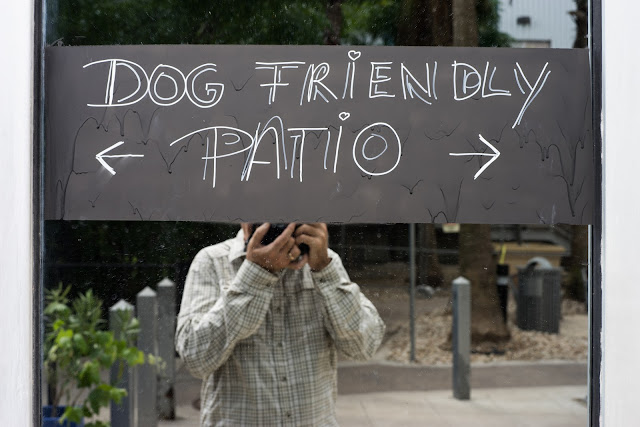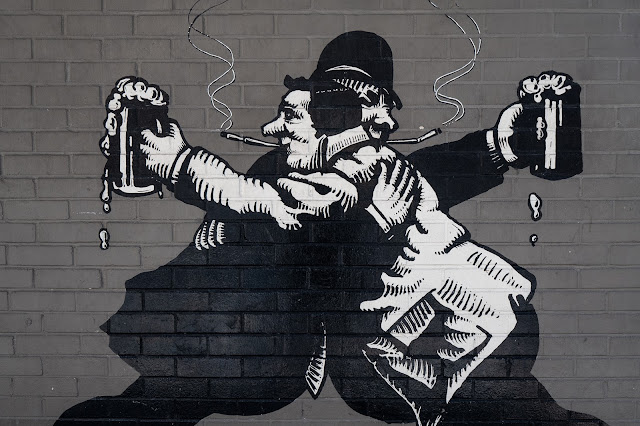We've been in the "hurry up and wait" mode with a project since last Summer. The photographer (me) is ready and waiting and the ad agency is chomping at the bit in anticipation but, you know....clients.
We're finally spinning up and I'm proud of the ad agency for their first action, which was to organize a one day scouting mission to all four of the locations at which we'll be making photographs. I was even happier that we had the supervising client in tow. I was happy because scouting can be more than just laying eyes on a physical space and ascertaining whether or not you'll have enough space or need extra lights to make the location work. Scouting also gives you the opportunity to begin envisioning how you'll photograph and what parts of the location could be made better by a bit of directed, pre-shoot cleaning, straightening and re-organization.
Scouting with a client in tow gives you the chance to dissuade them from preconceived shooting angles that may not work well and it gives the client the opportunity to see the shoot from your point of view and to understand why you might be making compositional decisions that are different from the more obvious solutions.
A case in point is the classic
"We want to show human interaction and we're going to want a photograph of Bob interviewing Susan. We thought we could do it in Bob's office..."
While scouting you discover that Bob's office is very small and the interview would put Bob a couple feet from the back wall and that there was no natural way to position Susan to show her face and Bob's at the same time. Sure, in video we can cut back and forth, but with stills we'll need one workable master shot.
When the whole creative brief emphasizes a
shallow depth of field look and the client and agency want the situation to
look natural it helps to think a bit differently. Maybe a small round table in a much bigger workspace is really the right place for the interview to take place. Finding a workable area with space around it allows you, as the photographer, to talk the client through how well the extra space allows you to back up and use longer lenses. The long distance between Bob and Susan and the back wall gives you an easy path to dropping out the background. If you can show this to the client then you can change their presumptions and they also begin to look for locations with more depth.
I take a camera along on all scouting adventures. I set the WB to manual and shoot the existing light at each location. This allows me to remember just how far off the WB is from daylight and what lights, filters or modifiers I might need to bring to drag the color of a space back into neutral territory.
A scouting trip also is an opportunity for your client to see how well you'll work with their staff; their workforce. This is important for a job like the one we have coming up wherein all of the talent will be employees of a very large non-profit. I introduce myself to each person we meet during the day who will be involved in some way in the project, making a point to make eye contact and to treat them with the same deference I give to the advertising agency person who will write my check... which means I treat them as valued clients. I ask about their jobs and how they perform their tasks. I ask them for advice about making what they do seem authentic in the photographs and videos. I thank them for their time.
On one hand this helps to creative a collaborative relationship that will make the shoot day run better and on the other hand this is also my audition with a client I've never met before. If I show honest respect for each person I meet I'll lower the client's stress levels about "the big day." It's also a way of taking the mystery out of the process which reduces human friction even more.
On our scouting adventure in San Antonio yesterday we discovered that two of the critical pieces of hardware we want to show off for the client will be off location the week of the 11th-15th and we will need to schedule around that. We have one location that is meant to show off the organization's landscaping services. The client was thinking of wide shots with mowers in big fields. We'll get that but the ad agency art director and I also came up with the idea of bringing a flat of plants and having the workers plant them by hand in good locations. This gives us some good action that leverages the creative concept by getting us in tight and allowing for de-focused backgrounds that will make many of our interior shots. We added a flat of plants to the prop inventory.
In each space I assessed how we would need to modify the existing lighting or add to it. In each space the art director and I looked for and discussed good angles that would showcase a process while minimizing cluttered backgrounds. By the end of our scouting we'd nixed one or two shots that would not work and we all understood much better how to work with what we have.
I have a couple dozen scouting shots to share with the client in order to keep our collaborative suggestions fresh in their minds as they work on the schedule for two consecutive shooting days. I'll also share the images with the videographer who will be a critical part of my team. I'll shoot stills while he follows along and grabs b-roll for the client's ongoing social media campaigns.
Finally, I started my trip with a drive down to San Antonio to visit family but I was also using the trip and the overnight stay before the scouting day to figure out which hotel I'll use as a two day base during this upcoming leg of the yearlong project. I found a La Quinta Hotel that's close to the agency and the client. I stayed there and it was well run and quiet. Breakfast was reasonably good. Not
Four Seasons Hotel good but more than adequate. The hotel is also a few blocks from the main freeway which means we can get to all the job sites and to the ad agency with dispatch.
So, to sum up: Scouting familiarizes me with locations I've never seen before. It sets expectations for what's possible and what's not. It helps all of us see stuff that needs to be fixed before the days of actual photography; that gives the "team" a fighting chance to get the location dress right. It gives the client an opportunity to see me problem solve for them and also gives them the chance to see how I'll interact with their team. That goes a long way toward building confidence in each other's judgement. Finally, it gives the advertising agency a good framework for scheduling and propping.
We charge for scouting but it saves the client lots of resources and time. It can be demoralizing to arrive at an un-scouted location only to find that it's a wreck, the talent you were going to shoot is dressed in an old Spurs Basketball T-Shirt, and the only lighting is one flickering florescent fixture up in a corner of an otherwise dark room. Fortunately we didn't see anything like that with this client but now we are certain the job can be done well and everyone is on the same page.
Even if you are just doing a personal project scouting is a good thing and can open your eyes to both trouble spots and great opportunities. I recommend it.
Back from scouting and ready to swim.




























































